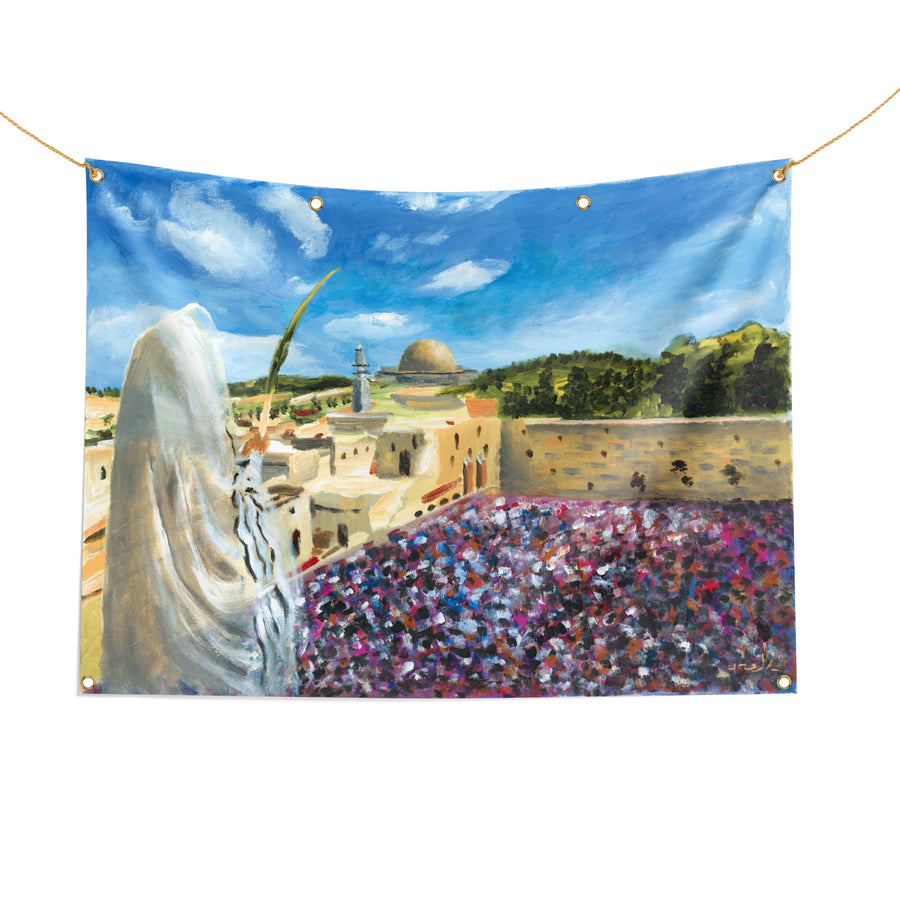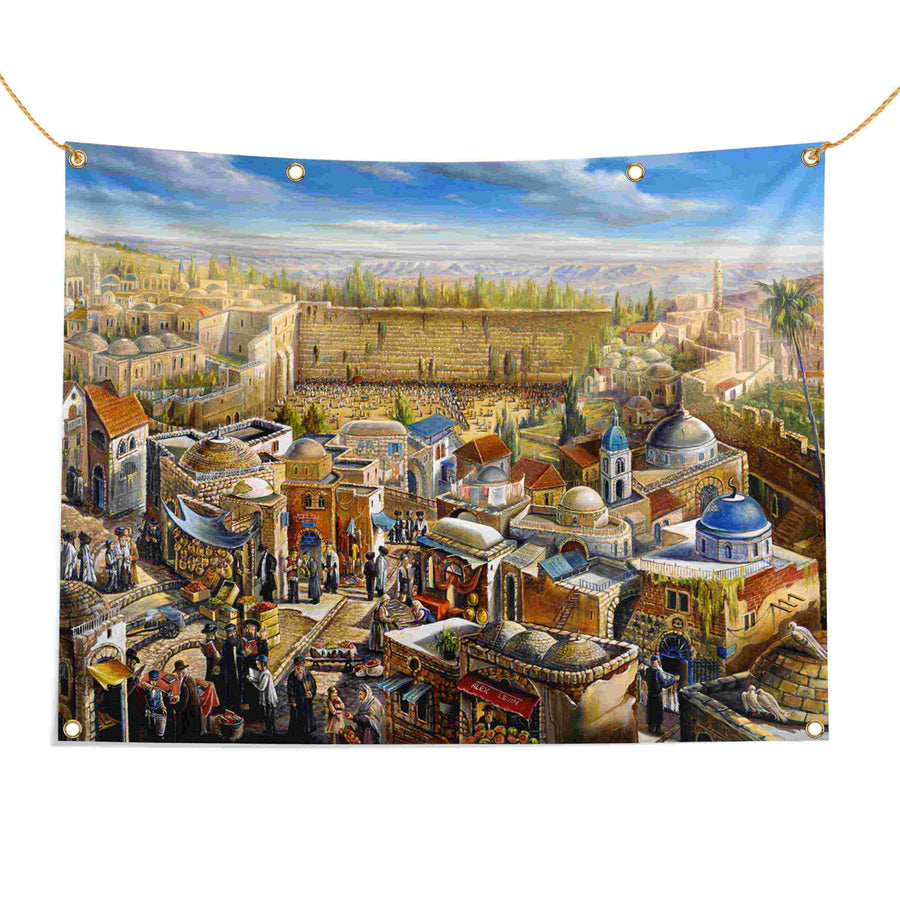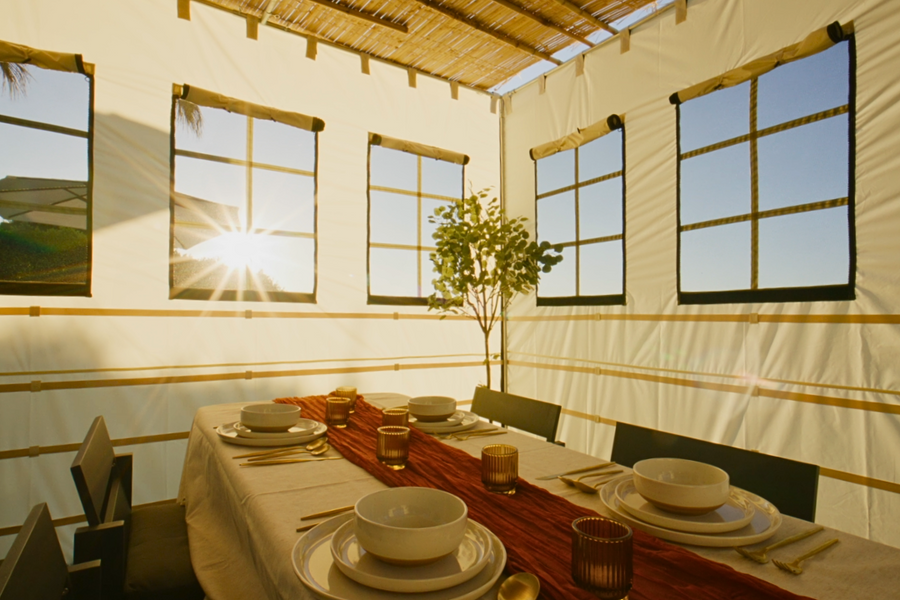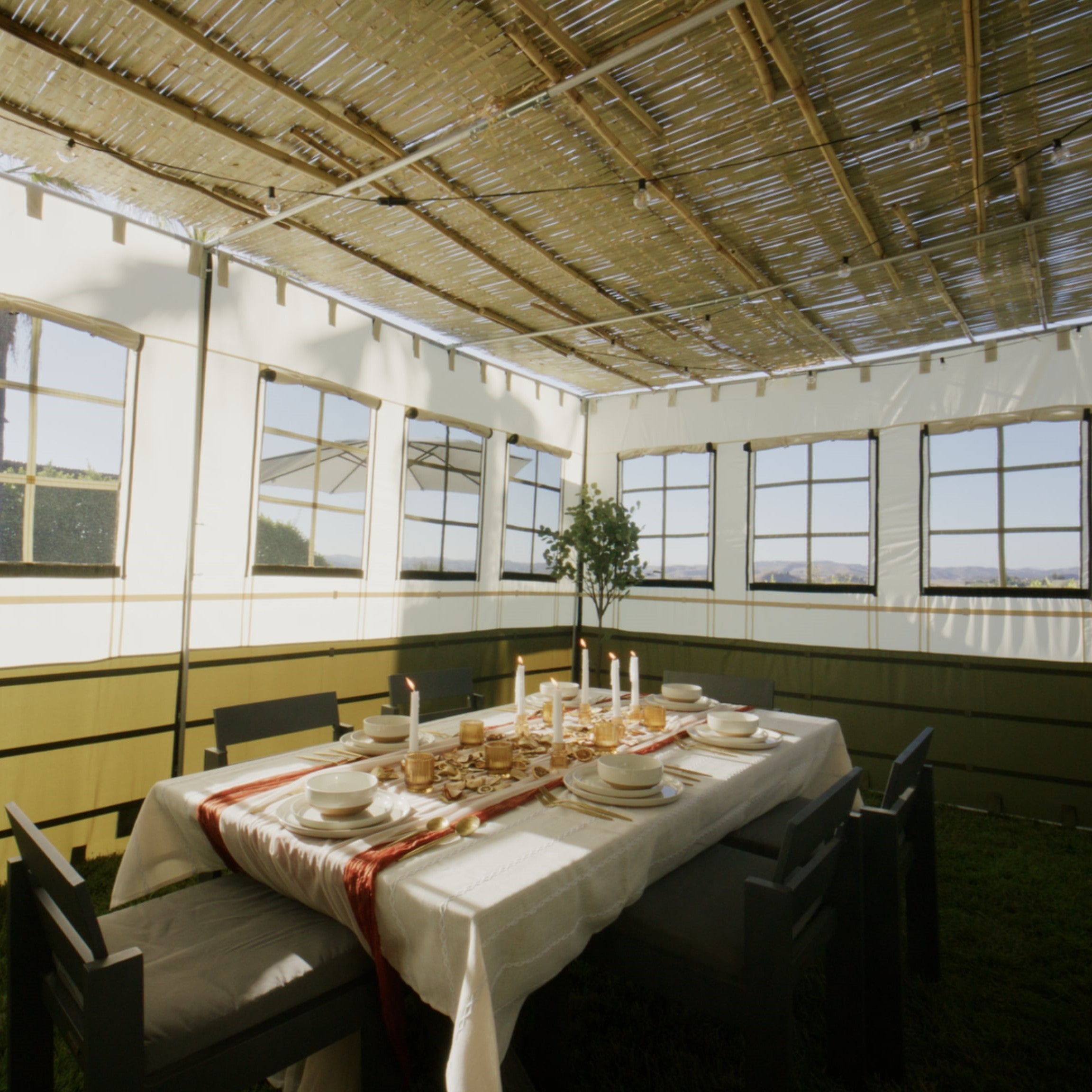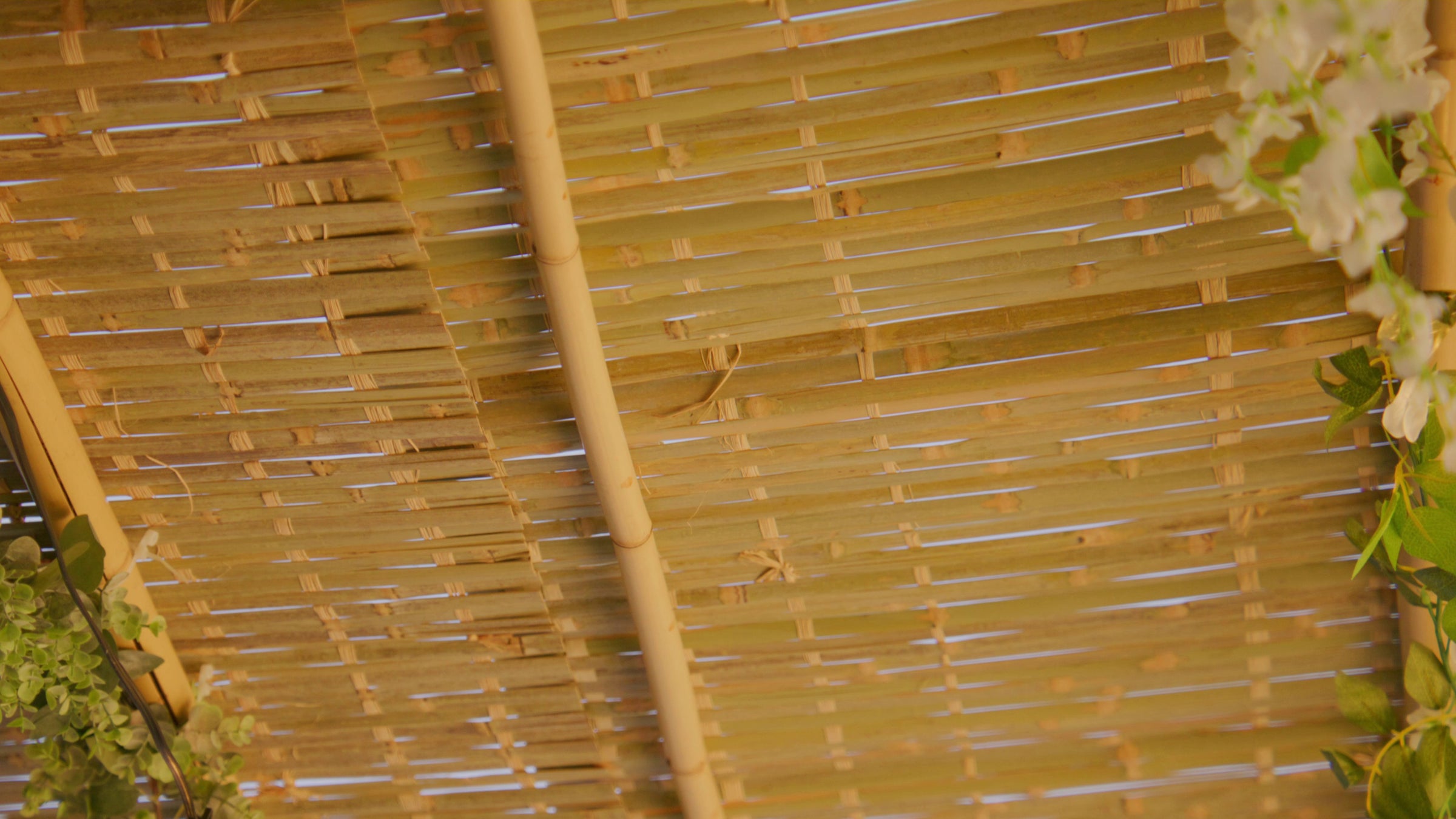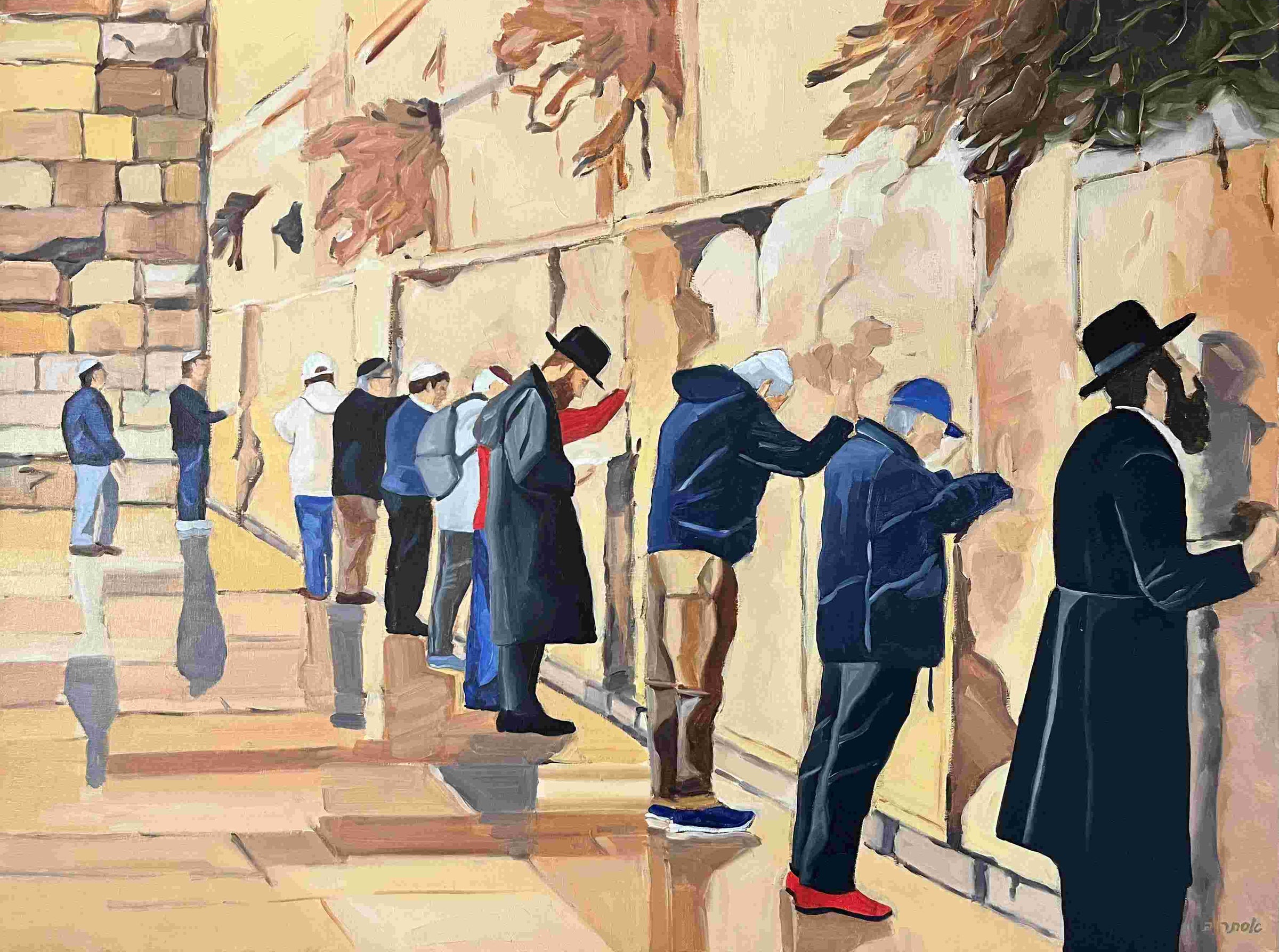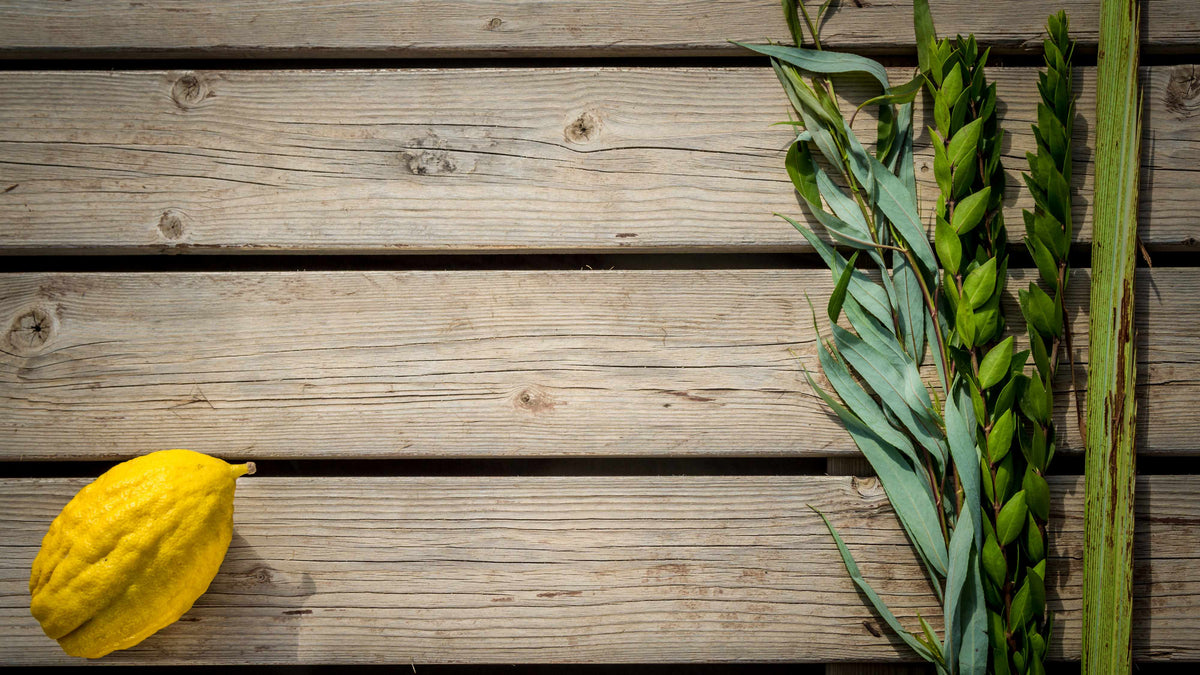

Table of contents
Each day of Sukkot (except for Shabbat), there’s a special mitzvah to shake the “Four Kinds” – a lulav (date palm frond), an etrog (citron), three hadassim (myrtle branches), and two aravot (willow branches). As the verse from Leviticus 23:40 puts it, “On the first day, take the fruit of a beautiful tree [citron], palm fronds, a branch of a braided tree , and willows from the brook, and rejoice before the L‑rd your G‑d for seven days.”
Many people get their “lulav sets” from their rabbis or reputable lulav and etrog vendors , who make sure they get a top-notch, ready-to-use kosher lulav and etrog set. But for those with a taste for adventure who want to dive into the wild world of the Four Kinds market, we’ve got some handy tips to help you navigate the options like a pro.
Even if you’re buying from a trusted source, it’s good to know what you’re looking at, since certain imperfections can turn a kosher lulav and etrog set into a not-so-kosher one.
(While the laws about the Four Kinds fill multiple chapters in the Code of Jewish Law, we’ll stick to the most common issues you’re likely to encounter today.)
Beauty: Not Just in the Eye of the Beholder?
The Torah (Leviticus 23:40) tells us to pick a “beautiful” fruit for Sukkot. But since ‘beauty is in the eye of the beholder,’ your idea of a stunning etrog might be different from someone else's. While the Torah specifically talks about the etrog, the sages, with their Talmudic know-how, extended this beauty requirement to all parts of your lulav and etrog set (the Four Kinds) as well.
So, as we dive into what could potentially make any part of your lulav and etrog set invalid, keep in mind that it's also key to choose ones for your set that look fresh and pleasing to you. After all, everyone has their own unique taste when it comes to picking the perfect set!
The Lulav and Etrog Vendor: No Grafting Around – Get the Real Deal
When it comes to buying your Four Kinds, it’s crucial to go with a trustworthy, G‑d-fearing vendor, and to make sure your etrog has rabbinical certification. Why? Because if that beautiful etrog was harvested from a tree that was cross-grafted with another species – a common practice to create those picture-perfect fruits – it’s a no-go for Sukkot. Rabbinical certification ensures that your etrog is a “purebred” from a tree that’s been carefully inspected.
That’s also why many people opt for an etrog from the Italian province of Calabria, often called a “Yanover” etrog. These etrog orchards have been growing the good stuff for centuries, with a reputation for producing etrogs of untainted lineage (more on why people have a preference for Italian etrogs in our article on the Italian Etrog Craze ).
The Lulav
The lulav is a fascinating one, with all its leaves naturally doubled up – each one folded over and snugly connected. The star of the show is the middle leaf at the very top, known as the t’yomet. This leaf is crucial because if it’s significantly split, the entire lulav is a no-go. If it’s only slightly split, your lulav still passes the kosher test, but it’s always better to aim for a lulav with a perfectly intact t’yomet.
Since the t’yomet is as delicate as it is important, handle your lulav with care – no knocking it around like a lightsaber! When picking out your lulav, look for one that’s straight and fresh, with a vibrant green hue. It’s all about keeping things lively and lush!
The Etrog: Finding the Perfectly Imperfect Fruit
When it comes to an etrog , beauty is all about cleanliness – no blemishes, no weird discolorations – and its shape. The ideal etrog? Think more ‘oblong and bumpy’ than ‘round and smooth,’ with a stem that pops out from a little dimple at the bottom.
If your etrog is missing even a tiny bit of its rind, it’s a no-go (unless it got pierced on the tree and healed up nicely). So, watch those fingernails when handling it!
An etrog with bubbles in more than two spots or noticeable discoloration in more than one area doesn’t make the cut. Discoloration only matters if you can see it at a glance – no need to get out a magnifying glass. Light brown spots, like little scabs from a leaf resting on the fruit while it grew, are usually no big deal. But black spots? If they’re easy to spot and show up in more than one place, that’s a problem.
Now, let’s talk about the pitam – a little stem-like thing at the top of some etrogs. If it falls off or gets completely removed, leaving the top bare, the etrog is invalid. But don’t worry – if your etrog never had a pitam to begin with, it’s still good to go.
Finally, the top third of the etrog is where the real beauty lies, especially in the part that slopes outward. In this area, even one bubble or discolored spot can spoil the show and i nvalidate it for use, so choose carefully!
The Hadassim: Triple the Fun
To be considered kosher, a hadas needs to have its leaves growing in sets of three (or more) all the way up the stem. This nifty pattern is called meshulash , meaning ‘tripled.’ If the leaves show up in sets of two, with the third one playing hide-and-seek higher or lower, that hadas is out of the running. But don’t worry – as long as the top 4¼ inches of your hadas is rocking that meshulash pattern, you’re good to go.
These days, though, most hadassim come prepackaged and certified kosher, making things a whole lot easier.
Just a heads up: if the majority of those ‘sets of three leaves’ have lost more than one leaf, it’s time to find a new hadas.
The Aravot: Keeping It Simple
When it comes to aravot, the rules are refreshingly straightforward – just make sure they're from the right species – the ‘river willow.’ One thing to watch out for: aravot tend to be on the long side, so if they need a trim to fit your lulav, be sure to snip from the bottom, not the top.
A quick note: your aravah is good to go as long as most of its leaves are fresh and intact. If the majority of the leaves fall off or dry up, it’s time to find a new branch.
Now that you’ve got your kosher set of the Four Kinds, it’s time to bind them together! Check out our handy summary of Binding the Four Kinds to learn how.


